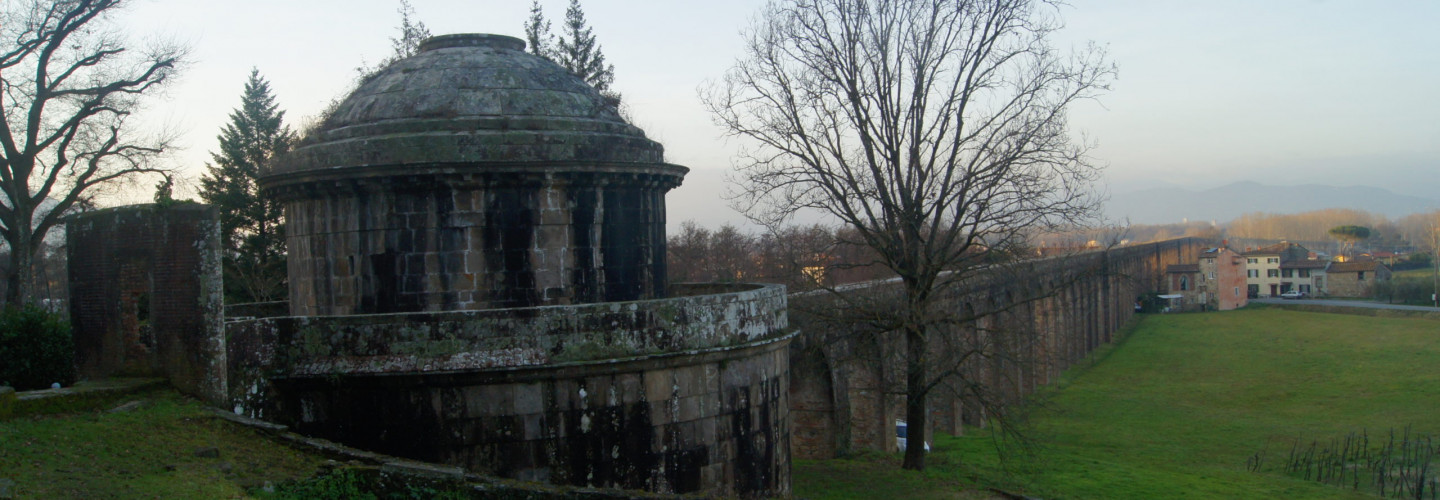Nottolini Acqueduct

According to the project of Lorenzo Nottolini, the water taken from about 18 pure sources of the Serra Vespaiata, Rio San Quirico and Rio della Valle, was conveyed to the Tempietto di Guamo, a circular building in Doric neoclassical style [2]. From here it was further purified and made clear by the subsequent passage of gravels and stones, as well as the crossing of many holes and barriers used to further deposit the impurities. The Serra Vespaiata spring is called “Alle parole d’oro” because the peasants exchanged the brass letters that covered some writings on the aqueduct for gold.
The pipelines extend for 3.2 kilometers on a structure about 12 meters high and supported by 460 brick and masonry arches which support two water channels on the top. Nottolini created two different water routes, depending on their origin: the spring waters were sent through a privileged route to the numerous public and private sources of Lucca, while the waters of San Quirico and the Valley went to feed the fountains monuments of the city. Nottolini therefore destined the water differently according to its quality, favoring the purest water for drinking purposes.
The temple-cistern of San Concordio, on the outskirts of Lucca. Photo Alinari between 1876 and 1881
Every seventeen Nottolini arches inserted a buttress for both decorative and structural functions. During the twentieth century, 6 arches were demolished, interrupting the aqueduct line in order to allow the passage of the A11 motorway between the Lucca and Capannori toll booths.
Initially the aqueduct was supposed to bring the water directly inside the walls of Lucca, but Nottolini modified the initial project by eliminating the 46 final arches towards the Baluardo San Colombano, in order not to compromise the architectural integrity of the walls themselves .
The aqueduct therefore ends in the Tempietto di San Concordio which is actually a cistern built from 1823 to 1825: it is a circular building in Doric neoclassical style, where water was collected in a double marble basin . From here the water was forced through mighty metal pipes towards the city of Lucca where it fed the complicated system of fountains passing under the Baluardo San Colombano. In particular, Nottolini designed a complex mobile system for the cistern to protect the iron pipes from breaking due to thermal expansion.
[from Wikipedia]

